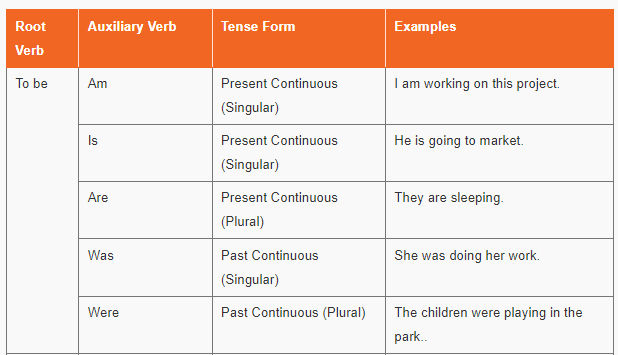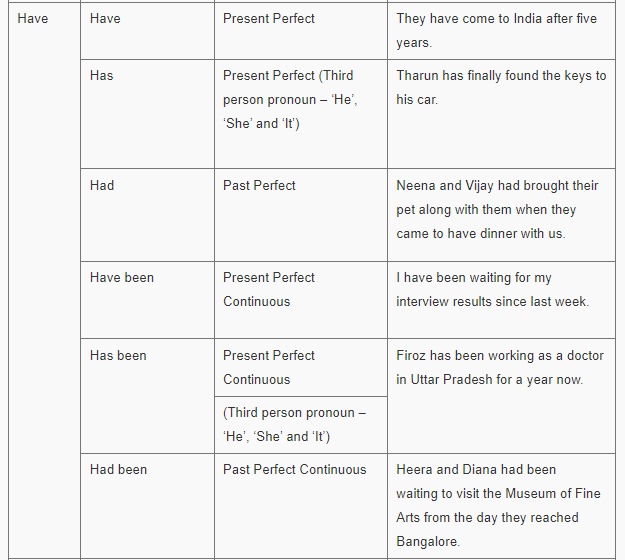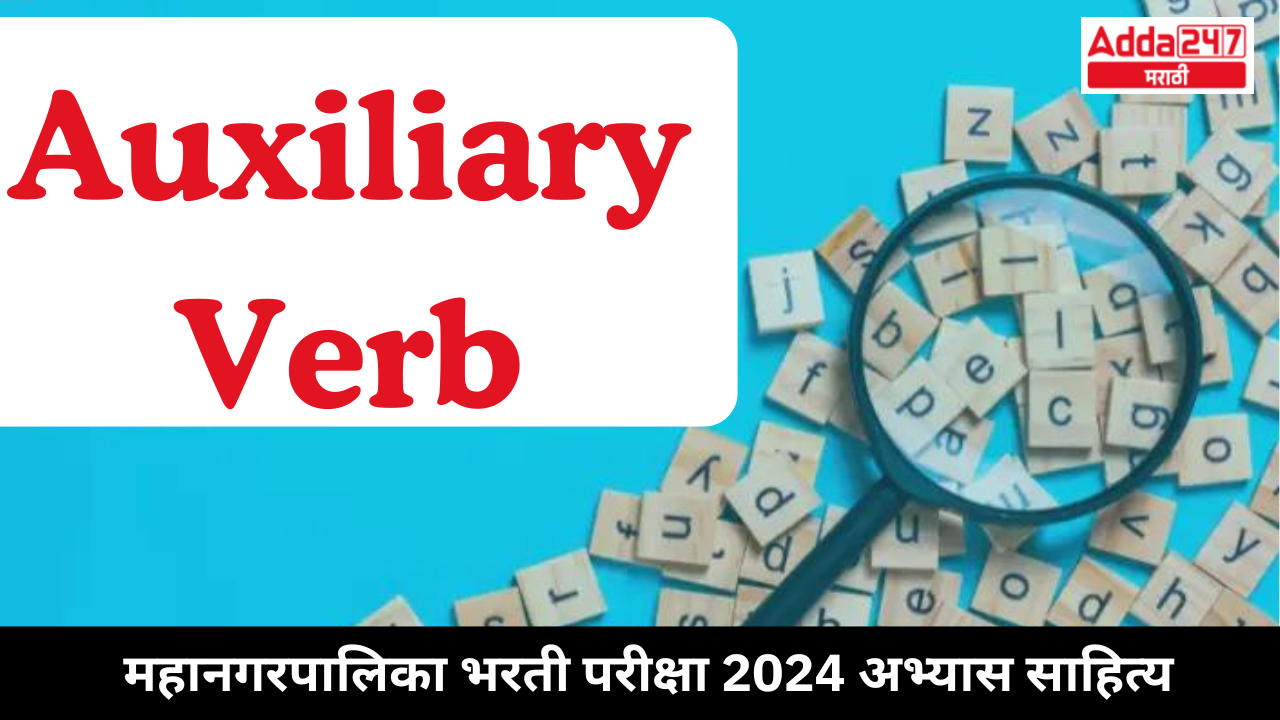Table of Contents
Auxiliary Verb
|
Title |
Link | Link |
|
महानगरपालिका भरती परीक्षा 2024 अभ्यास योजना |
अँप लिंक | वेब लिंक |
Auxiliary Verb
Auxiliary verbs, also known as helper verbs or helping verbs, work alongside the primary verb in a phrase to convey difficult grammatical concepts such as modalities or time aspects. For example, the auxiliary verb “finished the report” assists the main verb in finishing the phrase. Because auxiliary verbs might be tricky, we’ve supplied all of the information you’ll need here. We provide actual examples of common auxiliary verbs and explain when and how to utilize them.
What is an Auxiliary Verb?
Auxiliary verbs offer a supporting role in the main sentence, after the principal verb. They are mostly used to construct complex grammatical tenses, like as the perfect and continuous tenses, which reflect many aspects of time or the duration of an action.
As an example:
- I enjoy studying. (Present Simple).
- I’m going to have some fun. (Present Continuous).
The first sentence in the preceding instances does not require an auxiliary verb since auxiliary verbs are not used in simple/indefinite tense. However, in the second sentence, the auxiliary verb ‘am’ is employed since, aside from simple tenses, all tenses require an auxiliary verb to support the primary verb.
Modal Auxiliary Verb
- According to the Oxford Learners’ Dictionary, an auxiliary verb is “a verb such as be, do, and have used with main verbs to demonstrate tense, etc. and to construct questions, and negatives.”
- Modal Auxiliary verbs are “the verbs ‘be’, ‘do’, and ‘have’ in English, when they are employed with another verb to construct tenses, questions, question tags, and the passive,” according to the Macmillan Dictionary.
- Am, are, do, and has been are all auxiliaries in the sentences “I’m listening,” “Are you working,” “You don’t like her, do you?” and “The bill has been paid,” for instance.
- An auxiliary verb is defined as “a verb that is employed with another verb to generate tenses, negatives, and questions” by the Cambridge Dictionary. The auxiliary verbs in English are “be,””have”.
Auxiliary Verb Examples
Different tasks can be accomplished by auxiliary verbs in a sentence or context. In order to change the tense, voice, and mood of a sentence, auxiliary verbs serve as supporting verbs. Let’s see how each of these properties is met by these verbs.
Let us look at the following table to learn the uses of auxiliary verbs.



Types of Auxiliary Verbs
As auxiliary verbs assist the main verb in expressing tense, mood, and voice, there are 4 types of auxiliary verbs that execute these three duties.
Auxiliary Verbs for Expressing Tense
Because these auxiliary verbs can be confused with connecting verbs, it is crucial to examine the context of the surrounding words in the phrase, or context clues, to determine which verb is being used.
As an example:
When the car accident occurred, he was thankful that he was wearing his seatbelt.
Auxiliary Verbs for Mood Expression
Auxiliary verbs that reflect mood are frequently used in phrases that pose an inquiry or issue a directive.
Here’s an example of an interrogative sentence, or one that asks a question:
Did you remember to feed the dog the day before?
Even though the noun subject separates this auxiliary verb from the main verb, it nonetheless aids the main verb by questioning whether something was done yesterday or not.
Auxiliary Verbs for Expression of Voice
Voice can sometimes relate to a writer’s particular style, but in this context, voice refers to the distinction between active and passive voice.
When a verb is written in an active voice, the subject of the phrase performs the action.
For example, when he found himself surrounded by ravenous orcas, the lone dolphin screamed out urgently for his pod.
In this sentence, the subject, the dolphin, is carrying out the sentence’s action, which is termed.
Modality Expressing Auxiliary Verbs
The modal auxiliaries are a fourth sort of auxiliary verb that communicates possibility or ability.
Example – Remember when I said the girl wanted to color her hair?
This is an example of a modal auxiliary since it demonstrates ability because she couldn’t determine which color to use.
Sure, if she had done more research or solicited opinions from her friends, she might have been able to make a decision, but as written, she was unable to do so, necessitating the addition of one of these auxiliary verbs.
How to identify Auxiliary verb?
You are probably aware that every sentence contains a verb of some kind.
- Verbs can be divided into two categories. Action verbs are used to describe tasks that can be completed, while linking verbs are used to explain circumstances. The three primary auxiliary verbs—do, be, and have—can be accompanied by action verbs or connecting verbs.
- Sometimes events or circumstances only happen once before ending. In situations like this, several verbs that are often used as auxiliary verbs are switched out for action or linking verbs. The word “is” can be seen in this illustration. This is one of the most popular auxiliary verbs, however since it stands alone in this sentence, it is not doing its intended job.
John slammed the door on Tom’s hand. He is in the pain.
- In this line, “is” serves as a connecting verb. It is not an auxiliary verb because it is a stand alone verb.
- Other times, a situation, activity, or condition is ongoing, predictable, or connected to another occurrence or series of events. In certain circumstances, phrases with auxiliary verbs are utilised instead of single-word verbs like is because they better capture what transpired. These could contain anything between two and four words.
- A primary verb, usually referred to as a base verb, describes the nature of the activity or condition that is occurring. Auxiliary or assisting verbs are used in conjunction with the primary verb to express additional information that gives the reader more detail about the action that is taking place.
महाराष्ट्रातील सर्व स्पर्धा परीक्षांसाठी ऑनलाईन क्लास, व्हिडिओ कोर्स, टेस्ट सिरीज, पुस्तके आणि इतर अभ्यास साहित्य खाली दिलेल्या लिंक वर क्लिक करून मिळावा.










